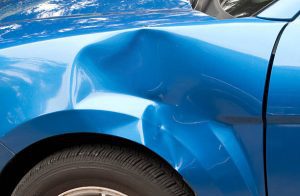Avoiding Rust and Corrosion on Your Car


Avoiding Rust and Corrosion on Your Car


Introduction
Rust and corrosion are common enemies of car owners, as they can cause serious damage to the vehicle’s appearance, structural integrity, and resale value. Rust occurs when metal surfaces are exposed to moisture, oxygen, and other corrosive elements over time. Fortunately, there are steps you can take to prevent rust and corrosion from forming on your car. In this article, we will provide you with detailed instructions on how to avoid rust and corrosion and keep your car looking and performing its best.
1. Regularly Wash Your Car
Regular car washing is one of the most effective ways to prevent rust and corrosion. Follow these steps to ensure a thorough and effective car wash:
Step 1.1: Choose the Right Time and Location
Wash your car in a shaded area or during cooler parts of the day to prevent the water and cleaning products from drying too quickly. Direct sunlight can cause water spots and streaks on the car’s surface. Additionally, avoid washing your car right after it has been driven, as hot surfaces can cause the water and cleaning products to evaporate rapidly.
Step 1.2: Gather the Necessary Tools and Materials
Before you begin, gather the following tools and materials:
- Car wash soap: Use a high-quality, pH-neutral car wash soap that is specifically designed for automotive use.
- Microfiber wash mitts or sponges: These are gentle on the car’s paint and help prevent scratching.
- Buckets: Fill two buckets with clean water—one for rinsing the wash mitt and one for the soap mixture.
- Hose or pressure washer: Use a hose or pressure washer with a gentle nozzle to rinse the car.
- Soft microfiber towels: These are useful for drying the car after washing.
Step 1.3: Pre-Rinse the Car
Start by pre-rinsing the car with water to remove loose dirt and debris. This step helps prevent scratching during the washing process.
Step 1.4: Prepare the Soap Mixture
Fill one of the buckets with water and add the recommended amount of car wash soap. Follow the instructions on the soap bottle for the proper dilution ratio.
Step 1.5: Wash the Car
Dip a microfiber wash mitt or sponge into the soapy water and gently wash one section of the car at a time. Start from the top and work your way down, ensuring thorough coverage. Rinse the wash mitt or sponge in the second bucket of clean water frequently to remove dirt and prevent scratching.
Step 1.6: Rinse the Car
After washing each section, use a hose or pressure washer to rinse off the soap thoroughly. Make sure all the soap residue is removed from the car’s surface.
Step 1.7: Dry the Car
After rinsing, use soft microfiber towels to dry the car’s surface. Wipe gently to avoid scratching the paint. Pay special attention to the door jambs, trunk, and other areas where water can collect.
2. Apply Wax or Paint Sealant
Applying wax or paint sealant is an effective way to protect your car’s paintwork from rust and corrosion. These products create a protective barrier that shields the paint from harmful elements. Follow these steps to apply wax or paint sealant to your car:
Step 2.1: Choose the Right Product
Select a high-quality wax or paint sealant that is suitable for your car’s paint type. Read the instructions provided by the manufacturer to ensure proper application.
Step 2.2: Clean the Surface
Before applying wax or sealant, make sure the car’s surface is clean and free of contaminants. Use a clay bar or detailing clay to remove any embedded dirt or debris.
Step 2.3: Apply Wax or Sealant
Apply a small amount of wax or sealant to a clean applicator pad or microfiber cloth. Work on one panel at a time, applying the product in thin, even layers. Follow the instructions on the product for the recommended drying and buffing time.
Step 2.4: Buff the Surface
After the recommended drying time, use a clean microfiber cloth to gently buff the surface, removing any excess wax or sealant. Buff in circular motions until the surface is smooth and glossy.
3. Keep Your Car’s Undercarriage Clean
The undercarriage of your car is particularly vulnerable to rust and corrosion, as it is exposed to moisture, dirt, salt, and other debris. To protect the undercarriage and prevent rust formation, follow these steps:
Step 3.1: Regularly Rinse the Undercarriage
After driving on salted roads or in areas with high humidity, rinse the undercarriage of your car thoroughly with clean water. Use a hose or pressure washer to remove any dirt, salt, or debris that may have accumulated.
Step 3.2: Use an Undercarriage Spray
Consider using an undercarriage spray or rust inhibitor specifically designed to protect the undercarriage. These products create a protective barrier and help prevent rust and corrosion.
Step 3.3: Check for Damage and Repair
Regularly inspect the undercarriage of your car for signs of rust, corrosion, or damage. If you notice any issues, such as rusted areas or loose or damaged protective coatings, have them repaired as soon as possible to prevent further damage.
4. Avoid Driving in Harsh Conditions
Exposing your car to harsh conditions increases the risk of rust and corrosion. Whenever possible, try to avoid the following situations:
- Driving on salted roads: Salt used for de-icing can accelerate rust formation. If you must drive on salted roads, rinse your car as soon as possible afterward to remove the salt.
- Driving in coastal areas: Coastal environments expose your car to saltwater and high humidity, which can lead to rust and corrosion. Regularly wash and rinse your car to minimize the effects.
- Parking under trees: Tree sap, bird droppings, and leaves can damage your car’s paintwork and lead to rust formation. If you park under trees, clean your car regularly to remove these substances.
5. Address Scratches and Paint Chips Promptly
Scratches and paint chips expose the metal surface of your car to moisture and other corrosive elements, making it more susceptible to rust. To prevent rust formation, address scratches and paint chips promptly:
Step 5.1: Clean the Affected Area
Before repairing a scratch or paint chip, clean the area thoroughly to remove any dirt or debris. Use a mild detergent and water, and dry the area completely.
Step 5.2: Touch Up the Paint
Using touch-up paint that matches your car’s color, carefully fill in the scratch or chip. Follow the instructions provided with the touch-up paint for the best results.
Step 5.3: Apply Clear Coat
Once the touch-up paint has dried, apply a layer of clear coat to protect the repair and blend it with the surrounding paintwork. Allow the clear coat to dry completely.
Step 5.4: Polish and Wax
After the clear coat has dried, gently polish the repaired area to blend it with the rest of the paintwork. Finish by applying wax to the entire panel for added protection.
6. Check and Maintain the Drainage System
Clogged or malfunctioning drainage systems can lead to water accumulation, which increases the risk of rust and corrosion. Follow these steps to check and maintain the drainage system:
Step 6.1: Clean the Sunroof Drains
If your car has a sunroof, locate the drainage holes and clean them regularly. Use a small brush or compressed air to remove any debris that may be blocking the drains.
Step 6.2: Clear the Cowl Vent
The cowl vent, located near the base of the windshield, allows water to drain from the windshield and hood area. Ensure that the cowl vent is free of debris and clean it periodically to maintain proper drainage.
Step 6.3: Check the Door and Trunk Seals
Inspect the door and trunk seals for any signs of wear or damage. Damaged seals can allow water to enter the interior of the car, leading to rust formation. Replace any damaged seals as needed.
Step 6.4: Clean the Wheel Wells
The wheel wells can collect dirt, mud, and debris, which can trap moisture and promote rust formation. Regularly clean the wheel wells and remove any buildup to prevent corrosion.
Conclusion
Preventing rust and corrosion on your car requires consistent care and maintenance. By following these steps and incorporating them into your regular car care routine, you can protect your vehicle from the damaging effects of rust. Remember to wash your car regularly, apply wax or sealant, keep the undercarriage clean, avoid harsh driving conditions, address scratches and paint chips promptly, and maintain the drainage system. By taking these proactive measures, you can keep your car looking great and maintain its value for years to come.








